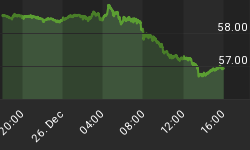Despite a series of worrying news items last week, U.S. stock markets managed to deliver strong gains. Time and again, U.S. investors seem to turn lemons into lemonade by assuming each bad data point is an indication that the bottom is in. Is such behavior indicative of a stock market revival or simply evidence of a bear market rally?
For those who strive to think logically, the current market is a challenging environment in which to make money. The current volatility has been particularly difficult for those who gravitate towards the traditionally conservative "buy and hold" approach.
The small investor is not alone in his confusion. Of some 90 university endowments and similar foundations followed by Northern Trust, only 20 percent managed a positive return in 2007. Even those that did struggled hard to achieve an average return of 3.1 percent. On average, public and corporate pension funds faired worse with negative returns of 4.3 and 5.1 percent respectively. As a result, investors large and small are willing to believe that any piece of news, good or bad, is the long awaited "all clear" signal that will herald good times on Wall Street.
So with the dollar appearing to recover (as recession is forecast in Europe and elsewhere) and with foreign stock markets having experienced corrections, is it time to look again at U.S. equities? If the past decade is any indication, the future looks bleak.
Although the recent U.S. stock performance has indeed been bad, many would be surprised to know that the weakness stretches back much further. In fact, the major U.S. averages for the first years of this bold, new 21st century are anything but impressive.
On October 12, 2007, the Dow Jones Industrial Index, against which many investment returns are measured, closed at a nominal high of 14,693. The media, of course, reported it as a sign of good things to come.
On May 23, 2008, the Dow closed at 12,480 -- down just over 15% from its record close. Not too bad, on the surface, at least. However, if adjusted by the official CPI inflation from January 2000 of approximately 4% per year (which in reality is far below the rate of actual inflation experienced by real people), the Dow in May of 2008 was worth only 9,856. If this inflation adjusted figure is compared to the Dow close of 11,723 on January 14, 2000, U.S. stocks were down more than 15% after eight years! And that's using the government inflation figures which are ridiculously optimistic.
In sum, assume an investment of $11,723 in the Dow average high of 11,723 on January 14, 2000. The same money could then have bought approximately 460 barrels of oil, 40 ounces of gold and 9 percent of an average family home.
Some eight years later, the money in the Dow would have increased to $12,480, for a nominal gain of $757, or 6.4 percent. But the $12,480 will now buy 355 less barrels of oil (down 77%), 27 less ounces of gold (down 66 %) and, despite a massive fall in house prices of 15.8%, only some 6 percent of an average family home (down 33%). In short, the investor of 2000 should feel robbed in 'real' terms, despite a 'nominal' rise in the Dow of 6.4 percent!
On the other hand, many foreign stock markets and currencies have risen substantially, and have outpaced the costs of typical consumer necessities. These are the kinds of returns which attract people to stocks in the first place.
With growing evidence of international recession, and increased credit woes, it is likely that the earnings of many American corporations will fall, not rise. Shrinking earnings will cause PE ratios to rise, based on present stock prices. This should make the current prices of many stocks look 'expensive," as they move violently sideways with a downward bias.
So beware the current rally in the dollar and U.S. stocks. The fundamentals remain miserable, and stock performance will ultimately reflect this reality.
For a more in depth analysis of our financial problems and the inherent dangers they pose for the U.S. economy and U.S. dollar denominated investments, read Peter Schiff's book "Crash Proof: How to Profit from the Coming Economic Collapse." Click here to order a copy today.
More importantly, don't wait for reality to set in. Protect your wealth and preserve your purchasing power before it's too late. Discover the best way to buy gold at www.goldyoucanfold.com, download our free research report on the powerful case for investing in foreign equities available at www.researchreportone.com, and subscribe to our free, on-line investment newsletter at http://www.europac.net/newsletter/newsletter.asp.
















